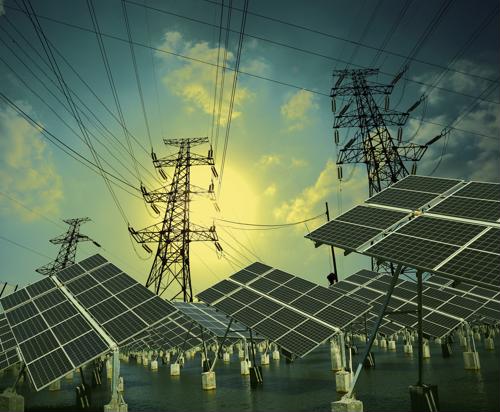
Smart grid technology paves the way to renewables integration
By Max BurkhalterJune 2, 2016
Wind and solar power have the potential to curtail climate change and provide reliable, efficient energy throughout the world. This is only possible, however, if these resources are integrated into the mainstream electric grid efficiently. Smart grid technologies are becoming incredibly important in this role as they provide the connectivity, data visibility and similar functions needed to integrate renewable resources into the grid. This functionality is necessary for a variety of reasons.
Looking at the need for smart grids
Wind and solar resources are variable renewables. They only generate power under specific conditions - when the wind is blowing or the sun is shining - and it is impossible to control when that will happen. It is, however, possible to store excess energy - battery systems have improved dramatically in recent years and continue to evolve - and to anticipate environmental conditions. This framework of using variable resources and optimizing them through energy storage and predictive analysis creates an operational climate where smart grid systems are critical, as challenges facing utility operators trying to integrate renewables into the grid include:
- Ramp rate management: Utilities must be able to control the way power enters the grid from renewable generation sites in order to avoid high spikes during peak generation times that may exceed what the grid can handle.
- Frequency regulation: The utility grid operates with a base frequency of power spread across lines to allow more energy to be moved to locations quickly and efficiently. If available energy from renewable resources plummets, frequencies can drop precipitously and leave grid operators needing to scramble to maintain baseline frequencies.
- Data integration: Distributing generation from large, centralized power plants out to a variety of wind and solar farms (not to mention partnering with homes and businesses using rooftop solar panels) is pushing utility operators to gather data from a wide range of sources and use that information to make effective power purchasing decisions across the grid.
Modern grid challenges are creating an operational framework in which operators must integrate a wide range of technologies and services into everyday operations. These solutions range from energy storage systems to rooftop solar panels and smart meters. All told, the need to bring these systems together boils down to depending on data from sensors, monitoring devices and connected management systems that create a truly intelligent grid architecture. Network connectivity becomes critical here, as moving data quickly and reliably across large geographical areas makes the smart grid possible.
"Moving data across large geographical areas makes the smart grid possible."
Using the smart grid as a foundation for renewables
Smart grid systems are capable of serving as the base for renewables integration because they give utility operators visibility into power demands at all times. With monitoring and management systems reporting generation data from wind and solar sites, demand requirements from endpoints and power availability from traditional generation locations, grid operators can make better decisions.
Combining that raw data with historic use patterns and projected weather conditions can empower utilities to identify when to store power and when to send it out to customers while also relying as much as possible on the cleanest, cheapest energy available at any time.
Considering the rise of renewables
Implementing smart grid solutions to support renewables integration has been a work in progress in recent years, but increased grid modernization is combining with rapid renewables expansion to create an environment in which innovation is essential.
The Renewable Energy Policy Network for the 21st Century recently released its Renewables Global Status report for 2015, and the study found that approximately 147 gigawatts of renewable power capacity was deployed around the world in 2015. On the whole, 2015 was period with the largest renewables capacity increase ever, making it a landmark step forward for the sector. The study explained that this growth was not only remarkable for its scale, but also for the way renewable capacity expanded despite conditions that favored fossil fuels.
The study explained that rapidly declining fossil fuel prices in 2015 could have led to a stall in renewables deployment if grid operators chose to stick with cheap power from oil, coal and natural gas instead of moving forward. Instead, the sector embraced renewables at a rapid rate.
Building a network that can sustain renewables growth
Grid modernization needs to continue if utility operators want to integrate renewables at a large scale, and strategic networks serve as the base upon which smart grid systems are built. Getting data from one place to another hinges on creative network strategies that mix a wide range of connectivity types, including:
- Private wireless networks for areas with a high density of devices.
- Long fiber-optic cable runs to reach distant locations.
- Serial-to-Ethernet links to interconnect specialty hardware at substations with Ethernet infrastructure.
Media converters and terminal servers play a critical role in these processes as they provide high-performance, secure interoperability between fiber, Ethernet and serial connections as needed.
Perle offers a range of cost effective serial-to-Ethernet converters to help meet NERC-CIP compliance for the protection of critical cyberassets in substations. The IOLAN SDS HV/LDC Terminal Server is designed to meet harsh environments associated with Power Substations with attributes such as support for substation AC and DC voltage ranges, extended operating temperatures and meeting emission, immunity and safety approvals associated with substation IT equipment.



